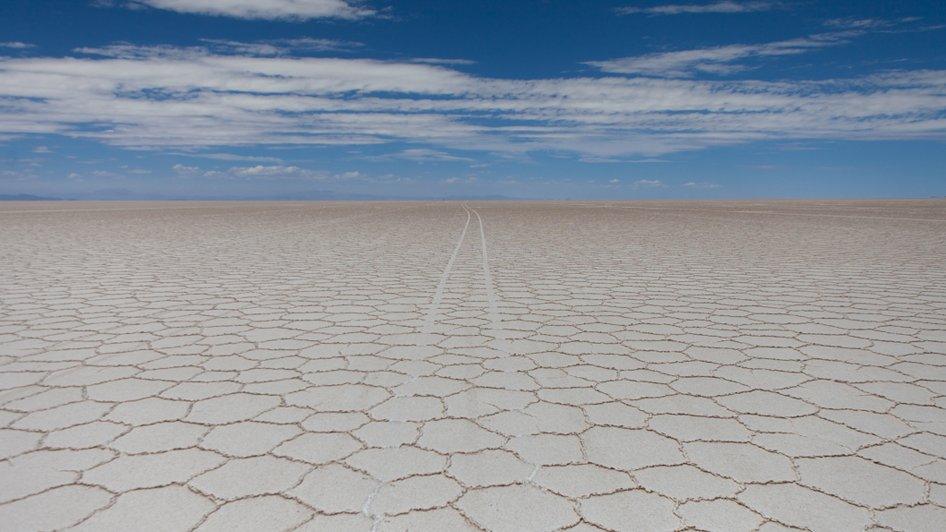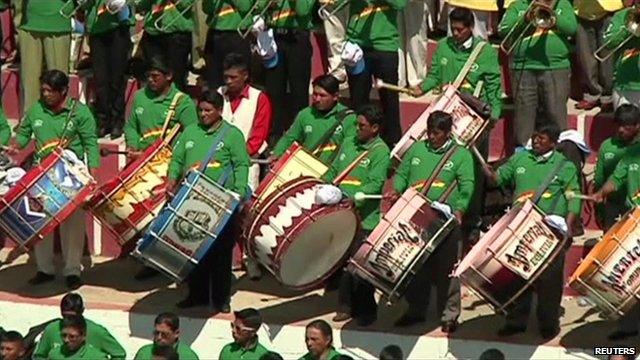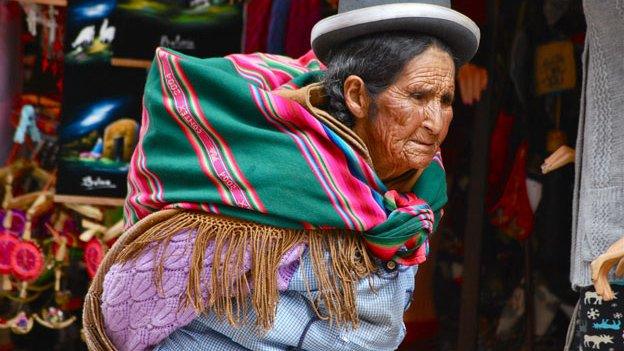In pictures: Bolivia's colourful Oruro carnival
- Published

The Oruro carnival is famous for its elaborate costumes and masks
People in the Bolivian city of Oruro are gearing up for carnival.
This year's celebrations start on 30 January, but the main days will be on 5, 6 and 7 of February when thousands of people will congregate in Oruro.
The carnival dates back more than two centuries and is one of Latin America's most colourful.
Photojournalist Fellipe Abreu and reporter Luiz Felipe Silva recorded some of its highlights in 2015.

Band such as Banda Poopo are the musical heart of the Oruro carnival
Bands have been part of the Oruro carnival since 1964, the year Banda Espectacular Pagador was founded.

Banda Espectacular Pagador has been playing for more than five decades
They play marches, cuecas (a musical style popular in Bolivia, Chile and Argentina) and other typical rhythms while they parade along a 3km (1.9-mile) route on the first day of the Oruro carnival.
Key to the Oruro carnival are "fraternidades", fraternal orders or fellowships, which parade around town preceded by a richly decorated float carrying a religious statue.

Silver cups and cutlery are used to decorate the floats carrying statues of the Virgin
The elaborate costumes, masks and decorations used in the Oruro carnival are largely made by hand in small workshops such as Berna Bordados y Artesanal.
Founded more than 50 years ago, Berna Bordados makes 325 masks each year.
It is run by brothers Jorge and Martin Cruz, who learned the trade from their father when they were only six years old.
They start making the masks as early as August.
It is hard work. A small mask takes about a day to make, while the larger masks can take up to four days.
The masks cost between $40 and $46 (£28-£32), and the costumes about $70.

Carnival workshops such as Berna Bordados abound in La Paz street
Another key part of the carnival is the procession to the church of Virgen del Socavon (Our Lady of the Mineshaft).
The Virgen del Socavon is the patron saint of the miners and a highly venerated figure in this mineral-rich part of Bolivia.

Revellers visit the church of Our Lady of the Mineshaft to pay their respects
The veneration of the Virgen del Socavon is believed to date back to local legends which pre-date colonial times.
According to indigenous legend, a demigod called Wari wanted to punish the Uru people, who inhabited the area, for adoring another deity.
He sent four plagues: a gigantic snake came from the west, a monstrous lizard from the east, a huge toad from the north and millions of large ants from the south.

Our Lady of the Mineshaft is the patron saint of the city of Oruro
The Uru people were haunted by these plagues until the arrival of Nusta, a female figure who defeated all four.
As Catholicism took hold in the area, Nusta later became identified with the Virgen del Socavon.

A huge cross and a statue of Our Lady of the Mineshaft are focal points of the procession
As a sign of their gratitude to Nusta/Virgen del Socavon and to tease the defeated Wari, who is often represented as a horned devil, the Uru people dressed up as devils themselves and danced to celebrate Nusta's victory.
The main carnival dance, the Diablada, recounts a battle between good and evil in which the Archangel Michael fights a variety of devilish figures.
It is believed to date back to the 15th Century, and has been practiced in its current form since the late 18th Century, when miners would dress up as devils and perform the dance in honour to the Virgen del Socavon.


There are also dances representing Bolivia's colonial history.
One of the most traditional is the "Morenada", performed by dancers representing African slaves brought to Bolivia during Spanish colonial times to work in the mines.
Their masks have outstretched tongues to represent the exhaustion from which the slaves suffered after long hours down Bolivia's silver mines.

Morenada dance groups are among the most tradition to perform at the Oruro carnival

Another popular character is The Bear, who plays tricks on people during the dance and entertains onlookers with his pranks.

The bear is a popular character
Other popular dances celebrate rural life and Andean animals such as the llama.

One particularly athletic and colourful dance is the Tinku, a form of ritualistic combat.

- Published24 January 2016

- Published24 February 2014

- Published20 February 2014
